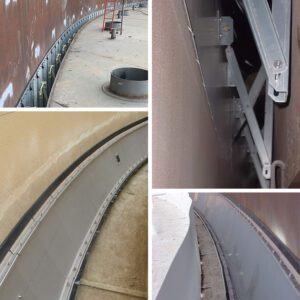To ensure optimal safety for workers entering fuel storage tanks, maintaining and testing your safe entry equipment regularly is essential.
Regular Inspections
Conduct frequent inspections of all safe entry equipment before each use to identify any potential issues that could compromise the safety of workers. Check that all parts are securely fitted and show no signs of damage or wear that could impact functionality or safety. Replace any worn or damaged parts immediately.

Functionality Testing
Test the functionality of equipment like supplied air respirators, retrieval mechanisms, ventilation systems, gas detection devices, and communication systems before each use to confirm all parts are operating properly. Respirators and ventilation systems should be tested to verify airflow and quality. Retrieval equipment and fall protection harnesses should be load-tested to the maximum weight capacity. Gas detection equipment should be calibrated and bump tested to confirm accurate gas sensing and alarms. Communications equipment should be tested to confirm clear transmission and reception between workers inside and outside the tank.
Maintenance
Establish and follow a regular maintenance schedule for all safe entry equipment, based on manufacturer recommendations to keep equipment in safe working order. Respirators, harnesses, lifelines, and ventilation systems typically require annual professional inspections, servicing, and recertification. Gas detection equipment usually needs to be calibrated every 6-12 months, depending on sensor types. Batteries for communications equipment and gas detectors should be replaced as recommended to avoid failure during use.
Proper maintenance, inspections, and functionality testing of safe entry equipment used for confined space entry help minimize risks to workers inside fuel storage tanks. By routinely checking that all parts are in good working order and replacing anything worn or damaged, you can have confidence in the safety and reliability of your equipment during tank entry operations. Taking the time to verify equipment is functioning as intended before each use provides an additional layer of protection for workers in these hazardous environments.




